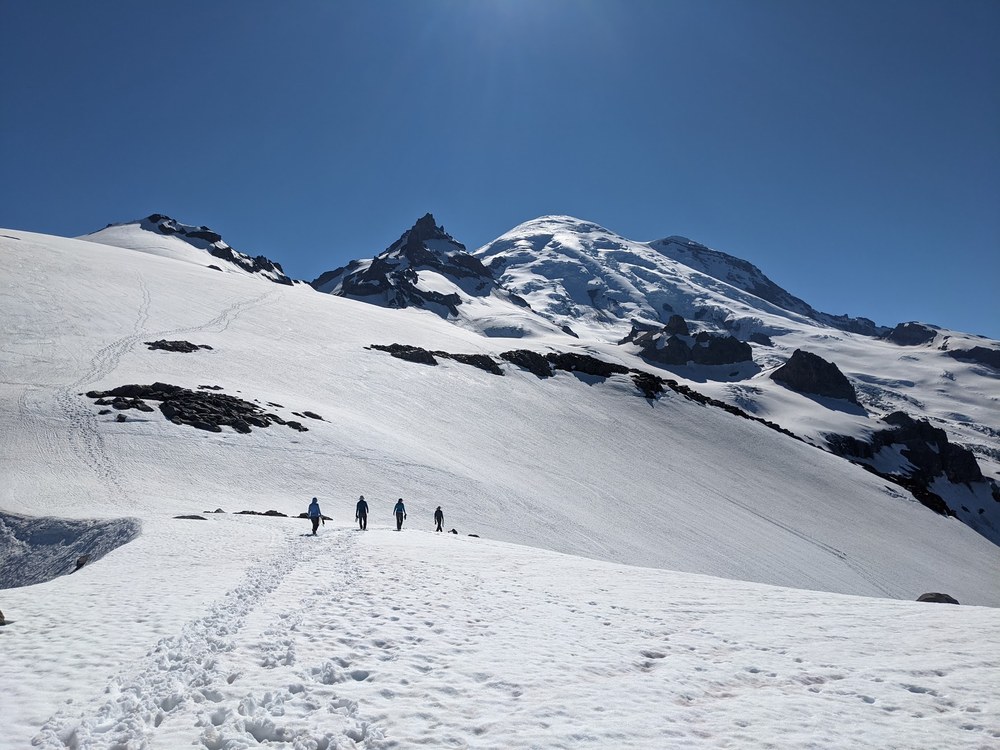
As Mountaineers, we are committed to learning from our experiences. We examine every incident that happens on a Mountaineers trip for opportunities to improve the ways we explore and teach. Our volunteer safety committee reviews every incident report and picks a few each month to share as examples of ‘Lessons Learned’. The trip report below describes what happened on this trip, in the leader’s own words, and outlines the lessons the leader has identified. In some cases, we offer additional key learnings from the incident.
Sharing incidents creates an opportunity to analyze specific incidents and also identify larger incident trends. We appreciate every volunteer trip leader who takes the time to share their incidents and near-misses so that others can benefit. We ask that readers engage critically and respectfully in the spirit of sharing and learning.
Little Tahoma, Mount Rainier – 23 June
FROM THE INCIDENT DATABASE: LEADER INCIDENT REPORt
LEADER
We were a two-party rope team of three people each for a climb of Little Tahoma. We were preparing for the final summit push after reaching the rocky notch at about 10,800 feet. This is just off the snowfield and it was at about 8:25am.
The first rope team that arrived at the notch/talus area had just unroped while the second team arrived, still roped up but on the talus just below them. As a group, we were discussing options for the final scramble section. At this point, the first rope team yelled for rockfall - we all looked up to see several rocks including microwave sized ones coming directly at us.
We all looked to see which direction to dodge. The first team successfully dodged the rock and remained upright. The second rope team tried to dodge, and they all fell to the ground, with one climber falling hard on their shoulder directly on a rock with all their weight. The other two climbers from the second team also fell but did not have any noticeable injuries.
We immediately began to assess the injured climber for injuries. They complained of a shoulder issue and upon checking found that they had contusions and minor abrasions on their right shoulder. We checked for obvious head injuries and other issues and did not find any other injuries. We moved the injured climber further away as much as we could from rockfall zone but were still in rock fall area.
We discussed activating our PLB but determined that we would need to evacuate the area no matter the response, so we decided to wait on the PLB call as we continued to assess and determine next steps. As the injured climber recovered from the initial shock of the injury, we set up an anchor system to attach to the climber.
The injured climber was mobile but could not use their right shoulder effectively, so we decided to lower them back to the snowfield and attach them to a picket.
We lowered them several more rope lengths to intermittent picket anchors while we were on the steeper section of the route, about 600 feet total. At about 10,200 elevation, they were able to navigate with their ice axe using their good shoulder. We switched to a short rope, with tension from another climber to help with balance or any falls, and descended the route.
At camp, we distributed some of the weight of the injured climber's pack, and they were able to walk out unassisted.
Lessons Learned
The two changes that would have helped in this case include:
- The route is known for rockfall. Given the multiple days of warm weather, we could have changed our objective to something with less rockfall potential.
- We should have immediately unroped and taken crampons off at the talus area. Not doing this made it much more difficult to react to the rock fall.
Fortunately, the group was made up of experienced climbers. Having multiple experienced party members contributed to good decision making throughout the incident.
 David Shema
David Shema